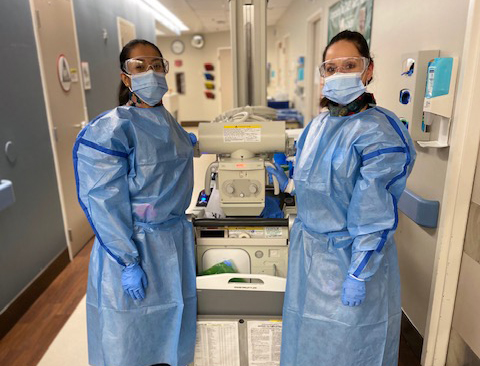
By Mary O’KEEFE
Reports in California in general and Los Angeles County specifically have seen an increase in the number of new cases and the number of hospitalizations due to COVID-19. Some report this is a second wave of the pandemic; some think this as a surge.
“To be honest, I am not sure anyone has the definitive answer,” said Dr. Rajiv T. Philip, a pulmonologist who serves at USC hospitals including Verdugo Hills Hospital.
Philip added there is not enough data yet to determine if this is a surge or a resurgence of the disease.
“We never truly flattened the curve either in Los Angeles County nor the country,” he said.
California and LA County reopened most businesses then the number of cases increased; however, Philip said the increase is not just because of the reopening.
“People are back in the workforce – they have to be – but I am not sure that everyone is following the simple guidelines of social distancing, wearing some kind of face covering and [being] in limited crowded areas,” Philip said.
With the reopening of businesses many felt that was a reason to ignore the guidelines, and the County saw a resurgence in the number of cases after Memorial Day. It is awaiting the numbers for the July 4 holiday, which will most likely be reflected about two weeks after the holiday.
There has been more testing done in LA County but Philip said the testing does not correlate with increased number of hospitalizations.
As of July 8, Barbara Ferrer, director of Public Health, stated the County is in a “very critical juncture.” Public Health is seeing a community spread similar to one that occurred in April.
“There is a small increase [in the number of] deaths but we expect more,” she said.
“From what we know, this is still COVID-19,” Philip said. “It has not mutated.”
Scientists do know more about how the virus is spreading, including community spread. According to the CDC [Centers for Disease Control and Prevention], community spread means people have been infected with the virus in an area, including some who are not sure how or where they became infected.
“This is a very infectious [virus], much more infectious than the common flu,” Philip said.
That is why there are recommendations by the County Public Health and CDC that people limit contact with each other.
“Verdugo Hills [Hospital] is seeing an increase, but has been fairly stale for the past few weeks,” he said.
He works at other USC hospitals that have seen a greater increase in cases and said several hospitals around the county are seeing increases as well. He praised the leadership at USC-VHH for its proactive planning regarding the pandemic. He feels confident the hospital administration will be able to meet any demands throughout the USC Keck community but there are still concerns as numbers increase that LA County will see the numbers climb.
Doctors continue to learn about the novel coronavirus. One thing they are seeing are the effects that some patients experience when they are infected with it, battle it and get to the other side of the virus.
“[We are] learning things everyday,” Philip said.
He added COVID-19 can affect the heart, causing patients to appear to have suffered a heart attack. It can cause blood clots, which can cause heart attacks and strokes. The clots can travel to the kidneys, affect a patient’s legs and possibly affect the brain causing confusion and memory loss.
“It is affecting multiple systems,” Philip added
In addition, patients who were in the ICU for COVID-19 could develop scaring fibrosis of the lungs.
“That is not reversible,” he said. “You lose lung function.”
Philip spoke about the increase in the number of cases and the increase in younger people testing positive for COVID-19. According to LA County Public Health, 50% of all new cases in the County are those between 18 and 40 years old.
Philip said people in this age category, in what they have seen so far, are less likely to die but get sick enough to be hospitalized.
“You’ve got to realize a lot of younger folks are spreading [COVID-19] around to family members and colleagues who are older. This is a cycle that can keep going on and on,” he said. “There is a false sense of comfort.”
He added younger people feel they are immune to COVID-19 or at least if they get it they can survive; however, they can bring it back to family members. Both can be hospitalized resulting in lasting symptoms and sometimes death.
“It is very troubling,” he said.
As for now, he and those in the medical field he works with are “trying to be safe.” They are using PPE [Personal Protective Equipment] like masks and shields. Despite all their precautions, doctors, nurses and others on the front lines of the pandemic are still becoming infected.
“It’s sad … when you see your own colleagues get sick with it and [knowing] there is only so much you can do and hope they are okay,” Philip said. “To be honest, we are taking it day by day.”
